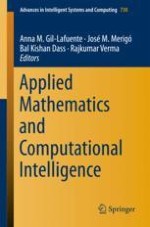This book gathers selected papers presented at the conference of the Forum for Interdisciplinary Mathematics (FIM), held at Palau Macaya, Barcelona, on 18 to 20 November, 2015. The event was co-organized by the University of Barcelona (Spain), the Spanish Royal Academy of Economic and Financial Sciences (Spain) and the Forum for Interdisciplinary Mathematics (India). This instalment of the conference was presented with the title “Applied Mathematics and Computational Intelligence” and particularly focused on the use of Mathematics and Computational Intelligence techniques in a diverse range of scientific disciplines, as well as their applications in real-world problems. The book presents thirty peer-reviewed research papers, organised into four topical sections: on Mathematical Foundations; Computational Intelligence and Optimization Techniques; Modelling and Simulation Techniques; and Applications in Business and Engineering. This book will be of great interest to anyone working in the area of applied mathematics and computational intelligence and will be especially useful for scientists and graduate students pursuing research in these fields.
